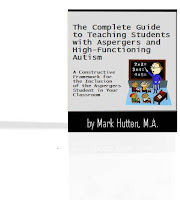Avoiding Negative Reinforcement in the Classroom: Tips for Teachers with Aspergers Students

Negative reinforcement requires the student to work for the removal of an in-place, unpleasant consequence. The student's goal is to get rid of something that is unpleasant rather than to earn something that is desirable. In a negative reinforcement model, instead of working to earn a positive consequence, the student works to distance himself from an aversive consequence. Negative reinforcement is often used in the classroom to manage problem behaviors in Aspergers (high-functioning autistic) children. Educators inadvertently pay attention to a student who may not be complying and withdraw their attention contingent on the student's compliance. Surprisingly, this strengthens rather than weakens the noncompliant behavior. The next time a similar situation occurs, the student again will not comply until confronted with the aversive consequence (i.e. the teacher's attention). Negative reinforcement is often seductive and coercive for educators. It works in the short run
